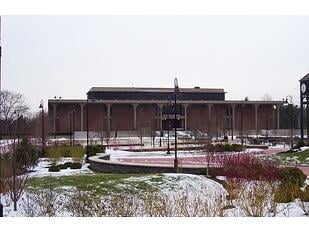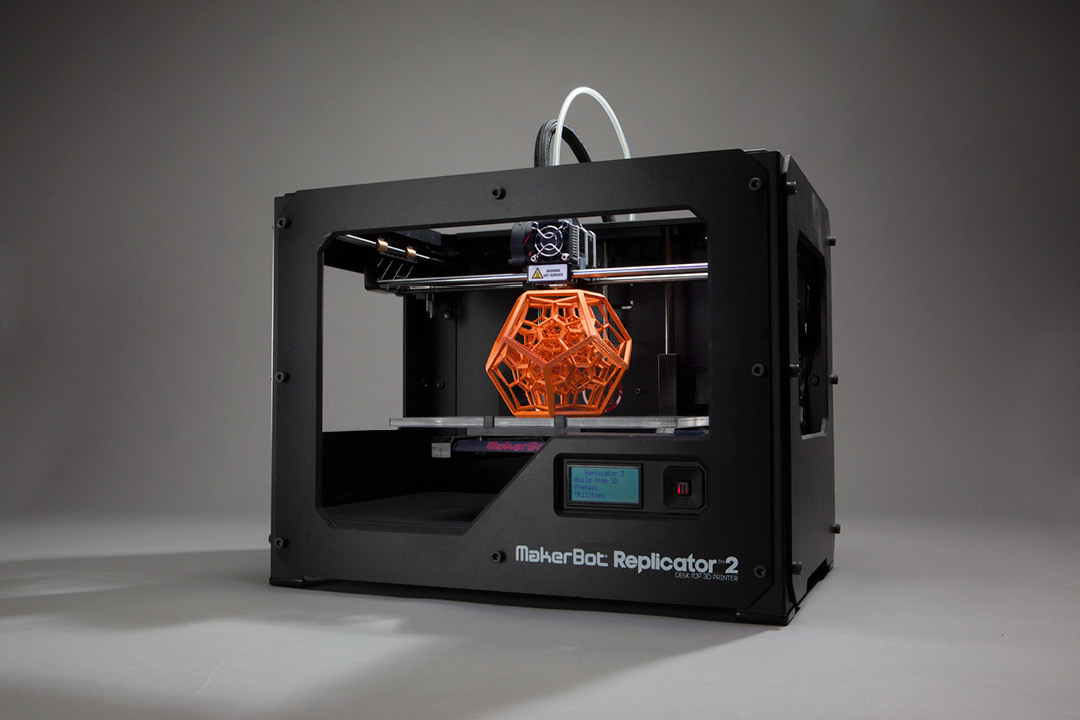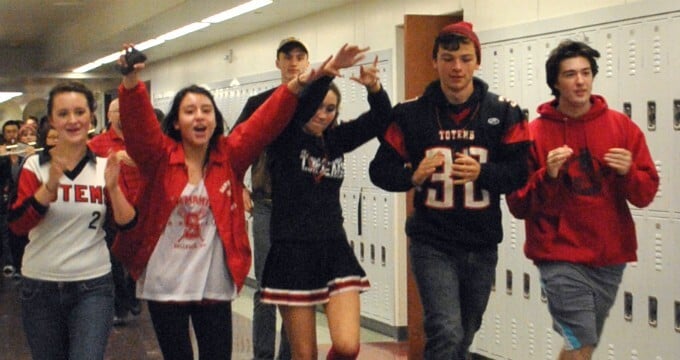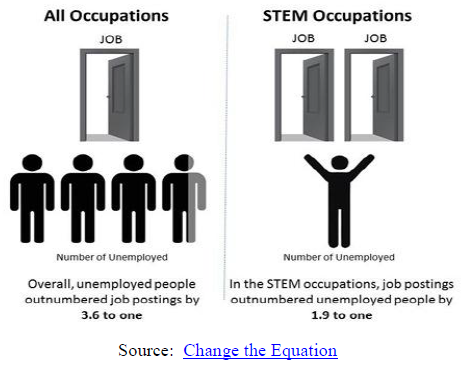3d printers in Suffolk libraries
 Librarians in Suffolk County, NY believe it is part of their mandate as civilization’s repository of wisdom to allow users access to newer technologies like 3D printers. With a traveling exhibit including a Makerbot 3D digitizer and Makerbot 3D printer, they are out to show us that libraries are not, as one library director, Robert Lusak of the Smithtown Special Library District says, "... just about books and movies. Whatever the latest is in technology, we as the library want to be able to offer that kind of tool to our community." No question about it, 3D printers are the latest in technology, with one soon on its way to the International Space Station so astronauts can produce their own spare parts -- Scotty the chief engineer on the Enterprise would certainly have loved to have one!
Librarians in Suffolk County, NY believe it is part of their mandate as civilization’s repository of wisdom to allow users access to newer technologies like 3D printers. With a traveling exhibit including a Makerbot 3D digitizer and Makerbot 3D printer, they are out to show us that libraries are not, as one library director, Robert Lusak of the Smithtown Special Library District says, "... just about books and movies. Whatever the latest is in technology, we as the library want to be able to offer that kind of tool to our community." No question about it, 3D printers are the latest in technology, with one soon on its way to the International Space Station so astronauts can produce their own spare parts -- Scotty the chief engineer on the Enterprise would certainly have loved to have one!
- 0 Comments
- May 12, 2014 12:00:00 PM
- Posted by Charles Nimrad
- Topics: EdTech, Education, 21st Century Classroom, Student Engagement
Bringing the MakerBot 3d Printer into the Classroom

- 0 Comments
- May 5, 2014 9:11:00 PM
3d printing in education in Japan
Hey! Here is some good news: the Japanese government thinks it has to play catch-up to the United States in at least one area of manufacturing technology, 3D printers. After a lifetime of hearing about the supposed superiority of Japan in all things manufacturing--I’m driving a Subaru; how about you?--it’s great at last to find something about American manufacturing worth emulating.
Even more important, it’s great to realize that we Americans are doing something right in our schools--intending to furnish every single one of them with 3D printers. The determinative word in that last phrase is “intending;” we still have a long way to go before we can claim victory.
This wonderful new technology, as President Obama said in his 2013 State of the Union speech, “... has the potential to revolutionize the way we make almost everything. The next industrial revolution in manufacturing will happen in America.” Of course the Japanese would prefer that the revolution start there!
- 0 Comments
- Apr 28, 2014 1:30:00 PM
Soft Skills for success
What do robots and soft skills have in common in relation to EdTech? The answer, at least to this writer, was "more than I thought!"
I am assuming that anyone reading this post knows what a robot is. But in the absence of a formal definition, let's agree with a paraphrase of Supreme Court Justice Potter Stewart’s famous definition: I know one when I see one.
The definition of "soft skills" may be another matter. I hate to admit it, but until stumbling across the term in an interesting Eschoolnews post the other day, I’d never heard the term before. I went to the Wikipedia and et voilà!! there it was, the definition: “Soft skills are personal attributes that enhance an individual's interactions, job performance and career prospects. Unlike hard skills, which are about a person's skill set and ability to perform a certain type of task or activity, soft skills relate to a person's ability to interact effectively with coworkers and customers and are broadly applicable both in and outside the workplace.” You know, stuff like showing up on time for work and not punching-out the boss when he criticizes you.
- 0 Comments
- Apr 24, 2014 7:00:00 PM
- Posted by Charles Nimrad
- Topics: EdTech, Education, Education Politics
Advanced math and reading in kindergarten benefits school performance
Just when we thought it was safe to follow the old dictum ‘just let kids be kids,’ we stumbled over this latest research from the University of Chicago in the American Educational Research Journal which indicates that only four days per month of advanced math and reading content in Kindergarten leads to better test scores in the higher grades. This study will be difficult for parents eager to get their children off to the best start to ignore.
But don’t panic, ‘advanced math and reading content’ doesn’t mean algebra and James Joyce’s Ulysses. According to Amy Claessens, assistant professor of public policy at Chicago University's Harris School of Public Policy Studies and primary author of this study, ‘advanced’ in this context simply refers to the fact that 50% of kids arriving in Kindergarten have already mastered the basic content; advanced means providing content a majority of children have not as yet mastered.

- 0 Comments
- Apr 23, 2014 6:30:00 PM
- Posted by Mike Nardine
- Topics: Math, Education, Kindergarten
Makerbot 3d printing in schools
Math teachers, science teachers and engineering teachers, are you looking for a way to make your beloved disciplines more relevant to your students? Maybe even inspire a few to love them the way you do? Well, right now there is affordable new technology out there that can help you do just that! The Makerbot 3D printer and STEM BOT 3D CLASS from our own RobotsLAB.
StemBot 3D program that teaches students how to 3D print a robot, assemble it, work on the electronics, and finally program it.
Actually, 3D printers have been around since the 1980’s, but they were massive and super-expensive like the first-generation computers. Only in the last few years have they shrunk in size and dropped in price to where individual households and schools could afford them.
- 0 Comments
- Apr 22, 2014 12:30:00 PM
Robots in Pre-Calculus

As part of a school wide implementation of Problem based Learning (PBL), the pre-calculus classes at Sammamish High school in Bellevue, WA used robots to teach math. The prompt was simple, “What pre-calculus level math lesson could you teach using one of the robots we have?” The work produced was amazing!
First the students were given the opportunity to play with the robots and see how they worked. They had access to all four of the robots from the RobotsLAB kit: Sphero – a small robotic ball, ArmBot – a mechanical arm that can pick objects up, Mobot – a rover that moves with precision, and a quadcopter AR.Drone. Students also had access to an additional robot, LinkBot – two rover bots who could be programmed to mimic each other. After students investigated each robot, they selected one robot to use as a tool to teach a pre-calculus level lesson. Students had the option of choosing a topic they had already studied or choosing a topic they had yet to study.
- 0 Comments
- Apr 21, 2014 10:00:00 AM
TeacherCast Interview: Learn How RobotsLAB is innovating STEM Education
- 0 Comments
- Apr 11, 2014 10:30:00 AM
- Posted by Anna Sandler
- Topics: Math, Robotics, Pre-Calculus, Local News, EdTech, STEM, National News, Education, Press, Computer Science, NAO, 21st Century Classroom, School, Student Engagement, Geometry,, Middle School, algebra,, Curriculum
The importance of ensuring America’s continued competitiveness with STEM
The Great Recession began in 2007 and ’by the numbers’ ended in 2009. "By the numbers" meaning "technically". The Misery Index and unemployment have remained high in spite of this technicality. Why is that do you suppose? Is it possible there has been a change in the economy at a fundamental level not responsive to rising housing prices?
Could it be that the workplace itself changed so greatly during this period with the explosion of mobile computing devices like smartphones and tablets that the available jobs no longer reflects the pool of trained, unemployed job seekers? According to Sidharth Oberoi, chief academic officer at Zaniac, that’s the case. He writes, "A closer look at U.S. unemployment statistics shows that even with unemployment still at historically high levels, large numbers of jobs are going unfilled. Most of these jobs have one very important thing in common — the need for STEM education". He says further data suggests that while there are 3.6 applicants for every available job in the US, there is only one unemployed STEM worker for every two available STEM positions.

- 0 Comments
- Apr 4, 2014 11:00:00 AM
- Posted by Mike Nardine
- Topics: EdTech, STEM, Education, Education Politics, 21st Century Classroom
Taking Math Out of the Classroom into the Construction Site
High schoolers building homes for the non-profit organization Habitat For Humanity is another great example of 21st Century math teachers taking math out of the classroom where it has been languishing for centuries and putting it to work in a fashion guaranteed to engage young minds and hands. Forty-nine High School students in Vancouver built homes while participating in a class called Math in Construction.
What did they learn? Well, confidence for one thing. An appreciation for real-world math for another."It was an amazing experience," said One young scholar. "I'm going to use this in real life."
- 2 Comments
- Mar 20, 2014 11:00:00 AM
- Posted by Charles Nimrad
- Topics: Math, Local News, Education, Student Engagement
Relevant Posts
Popular Posts
Subscribe to Email Updates
-
I Want To Learn MoreADDITIONAL INFORMATION


